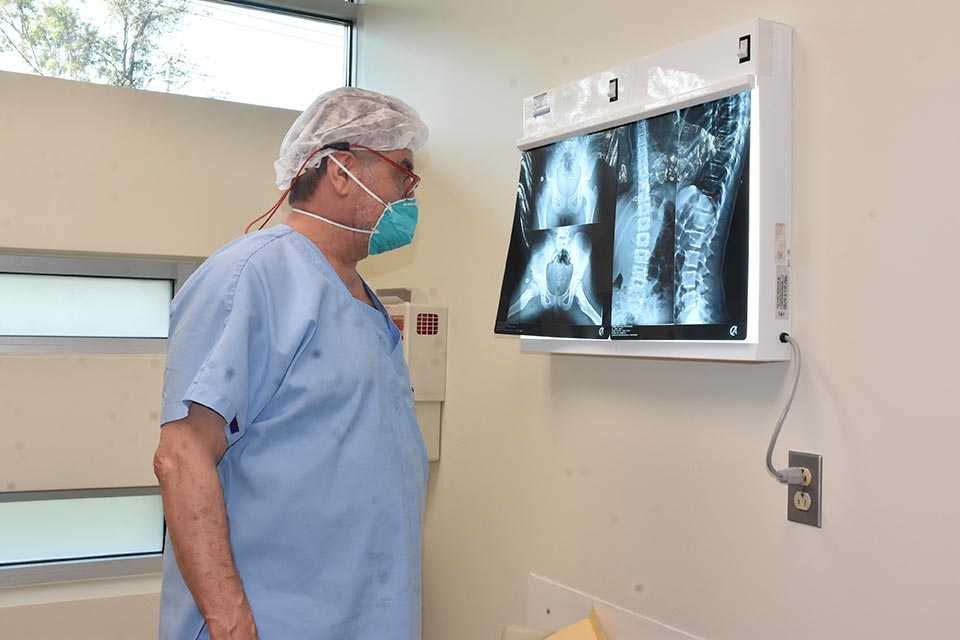Hip Dysplasia – Causes and Treatment
How do you know if a baby has hip dysplasia?
The term developmental dysplasia of the hip refers to an orthopedic condition where the acetabulum, or roof of the hip, is out of place to varying degrees. Currently three have been identified:
- Total hip dislocation.
- Hip subluxation (one part inside and one part outside).
- Acetabular dysplasia (the acetabulum or roof of the hip is horizontal instead of being vertical). The latter condition is quite common in Mexico, especially affecting white people.
What causes hip dysplasia?
This condition is much more common in girls, with an incidence ratio of 8-to-1, than in boys. Hip dysplasia is known to be caused by several factors, and the genetic aspect is very relevant in this condition. Parents who suffer from or have developed hip dysplasia should have an ultrasound for their children before they are 3 months old, or an X-ray after the age of 3 months to rule out the condition.
Developmental dysplasia of the hip is more common in the first pregnancy, or if the mother had deficiency of amniotic fluid; or when the baby comes in breech presentation (sitting position), in which case there is clear indication to have an ultrasound to determine if the baby will have a hip problem in the future.
Of the 73% of cases with dysplasia, 67% corresponds to left hip dysplasia and only 6% to right hip dysplasia. The remaining 27% occurs on both hips, bilaterally. Hip dysplasia is the second leading cause of hospitalization in pediatric orthopedic hospitals, especially in Mexico.
In developed countries and where few children are born, part of the protocol at birth is to perform an ultrasound. This measure has had a favorable impact, since hip surgeries have not been performed in more than 12 years thanks to early diagnosis. Another country that implements this measure is Chile, because newborn children have X-rays to prevent this condition in the future.
How do you detect infantile hip dysplasia?
Roberto Galván-Lizárraga, M.D., chief of education and head of the hip clinic at Shriners Hospitals for Children — Mexico, says that it is possible to detect the condition when changing the patient's diaper, “When changing the child’s diaper it is possible to notice there is a limitation when spreading the child’s legs, that is, when performing an abduction, you will be able to notice a clicking sound, also called the Ortolani sign.
When this is on one side, we notice that the legs don’t spread well, or when lifting the lower limbs, we may observe an asymmetry of the folds of the legs and buttocks. The diagnosis may be confirmed by an ultrasound, which is highly effective before 3 months of age.
Unfortunately, when the patient arrives at The Mexico Shriners Hospital, the diagnosis is already evident, because the patient arrives limping, or walking with both legs spread like a “duckling.” This is when the dysplasia is on both sides.

Hip dysplasia can be detected with an ultrasound before the age of 3 months, or with an X-ray after that age.
Risk Factors for Hip Dysplasia
This condition is caused by several factors, both due to genetic predisposition and due to intrinsic and extrinsic mechanical factors.
- Genetics: family inheritance.
- Mechanical: oligohydramnios (decreased amniotic fluid), first pregnancy, uterine abnormalities, breech presentation or sitting position.
- Cultural behavior: swaddling the baby with legs together as a “taco.” In this case, if the patient had incipient hip problems, this position causes the hips to come together and move out, thereby worsening the condition.
As a curious fact, the Mayans carried the babies on their back, in a position with their legs abducted (open) laterally, which helps the acetabulum of the hip to form and prevents this condition.
Treatments for Hip Dysplasia
If hip dysplasia is detected before the age of 6 months, it is possible to proceed with a conservative treatment that does not require surgery. Currently, the most-used treatment is the Pavlik harness, which helps keep children's legs open, which in turn helps the hip socket to enter into its place. In this case, a follow-up with ultrasound and X-rays is necessary.
If the patient's problem was not detected and the hip is totally dislocated, surgical treatment is required. “These are laborious and complicated surgeries, and here, at the Mexico Shriners Hospital, is where most of them are performed,” explained Dr. Galván.
Patient Recovery After Hip Dysplasia Surgery
When the patient has had to undergo surgery, he/she must be immobilized for six to 12 weeks, after which a rehabilitation process is required that can last from two to six months. In some cases, a second operation is required.
It is known that patients who need a hip replacement before the age of 60 had a “negligible” (not detected in a timely fashion) developmental dysplasia of the hip, which presents as early osteoarthritis or early hip wear.
Early Detection of Hip Dysplasia
“What we try to do is diagnose the condition at an early age. In the event of any suspicion, it is necessary to take an X-ray and prevent the condition from progressing, since these are pathologies that require follow-up for the rest of the patient's life if surgery is performed,” Dr. Galván said.
We invite you to learn more about this topic and see the Q&A session with Dr. Roberto Galván through our YouTube channel.
It is known that patients who need a hip replacement before the age of 60 had a “negligible” (not timely detected) developmental dysplasia of the hip, which presents as early osteoarthritis.
Keep In Touch
Join our mailing list to stay up to date on everything that's happening at Shriners Children's.
